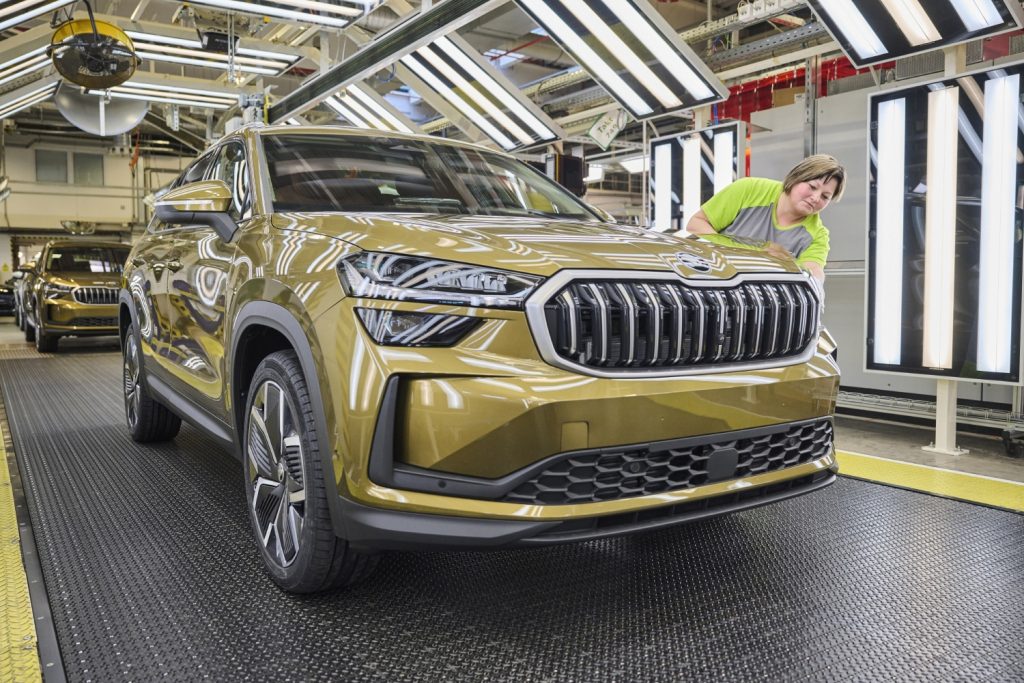Skoda has just announced the start of series production of the new generation Kodiaq at the Kvasiny factory in the Czech Republic, where the brand has invested €49 million to modernize that production unit.
Launched in 2016, and subject to a restyling in 2021, the largest SUV of the Czech brand is one of the models that has contributed the most to Skoda’s image change, having produced more than 870,000 units of the Kodiaq since its launch.

The second generation, which will arrive on the market soon, continues to feature combustion engines, but the Kodiaq will now have an unprecedented electric variant, which will only be available in 2026. It stands out for its modern exterior design, with a sculptural front end, the Skoda logo with a matte finish located on the hood, and a generously sized hexagonal grille, similar to the electric Enyaq iV.
Based on the latest evolution of the VW Group’s MQB modular platform, the new Kodiaq will offer gasoline and diesel engines, as well as a new plug-in hybrid version with front-wheel drive. In this case, the 1.5 TSI Evo 2 engine is combined with an electric motor, a six-speed DSG dual-clutch gearbox, and a 25.7 kWh battery, offering 204 hp and up to 100 km of electric range. It can also be charged with alternating current up to 11 kW or fast charging up to 50 kW.

As for the options with combustion engines, always combined with the 7-speed DSG gearbox, the mild hybrid gasoline version, also with front-wheel drive, is powered by the 1.5 eTSI engine with 150 hp. This is followed by the 2.0 TSI option with 204 hp, the same gearbox, and all-wheel drive. Finally, among the diesel options, there will be the 2.0 TDI with 150 hp and front-wheel drive, and the 2.0 TDI with 193 hp and all-wheel drive.
The second generation of the Kodiaq will come with the latest driving assistance systems, as well as the new DCC Plus Dynamic Chassis Control adaptive suspension, with electronically controlled individual dampers, which was first introduced in the VW Tiguan.












